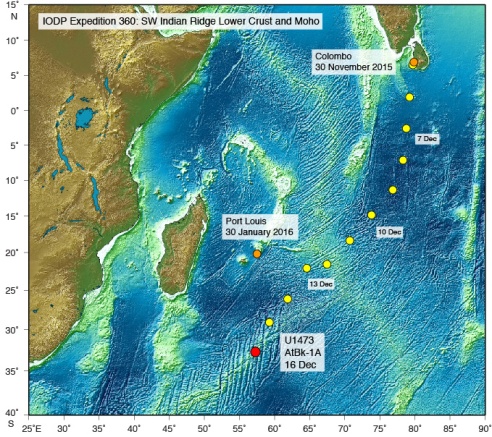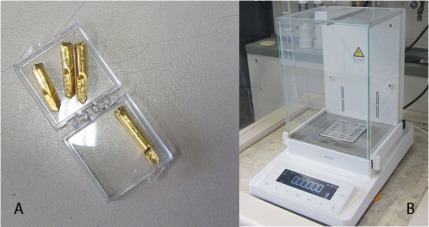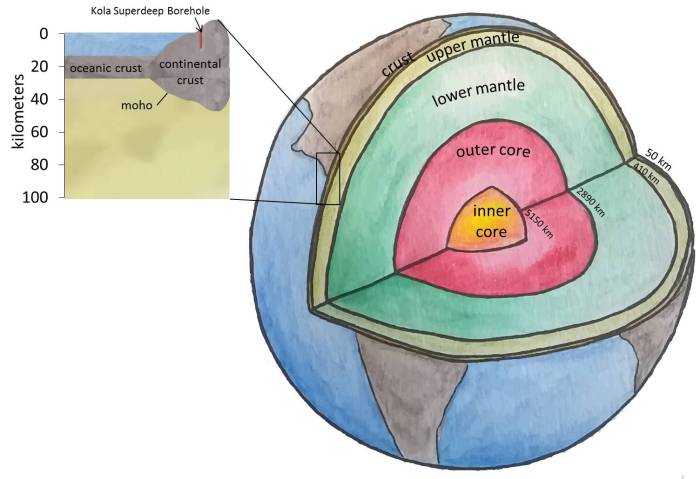Today, we are getting an impression of how daily life is on board of a scientific drilling vessel. At the moment Carlotta is on board the Joides Resolution, one of the scientific drilling ships of the International Ocean Discovery Program (IODP). She is part of the Expedition 360 Southwest Indian Ridge with its goal to drill into rocks of the lowermost oceanic crust and the crust-mantle transition zone (see blogpost about the oceanic crust). The SW Indian Ridge is a very slow spreading ridge (that means that the oceanic plates diverge about 8 mm/yr), located south-east of Madagascar (see image 1). The expedition started on 30th November, leaving Colombo and will end 30th of January once Port Louis will be reached. You see, this is quite a long time she is spending at sea!
I asked Carlotta a few question about how it is to be part of such an adventure and how it feels to work on a ship that moves all the time with the same group of people for 2 months!


